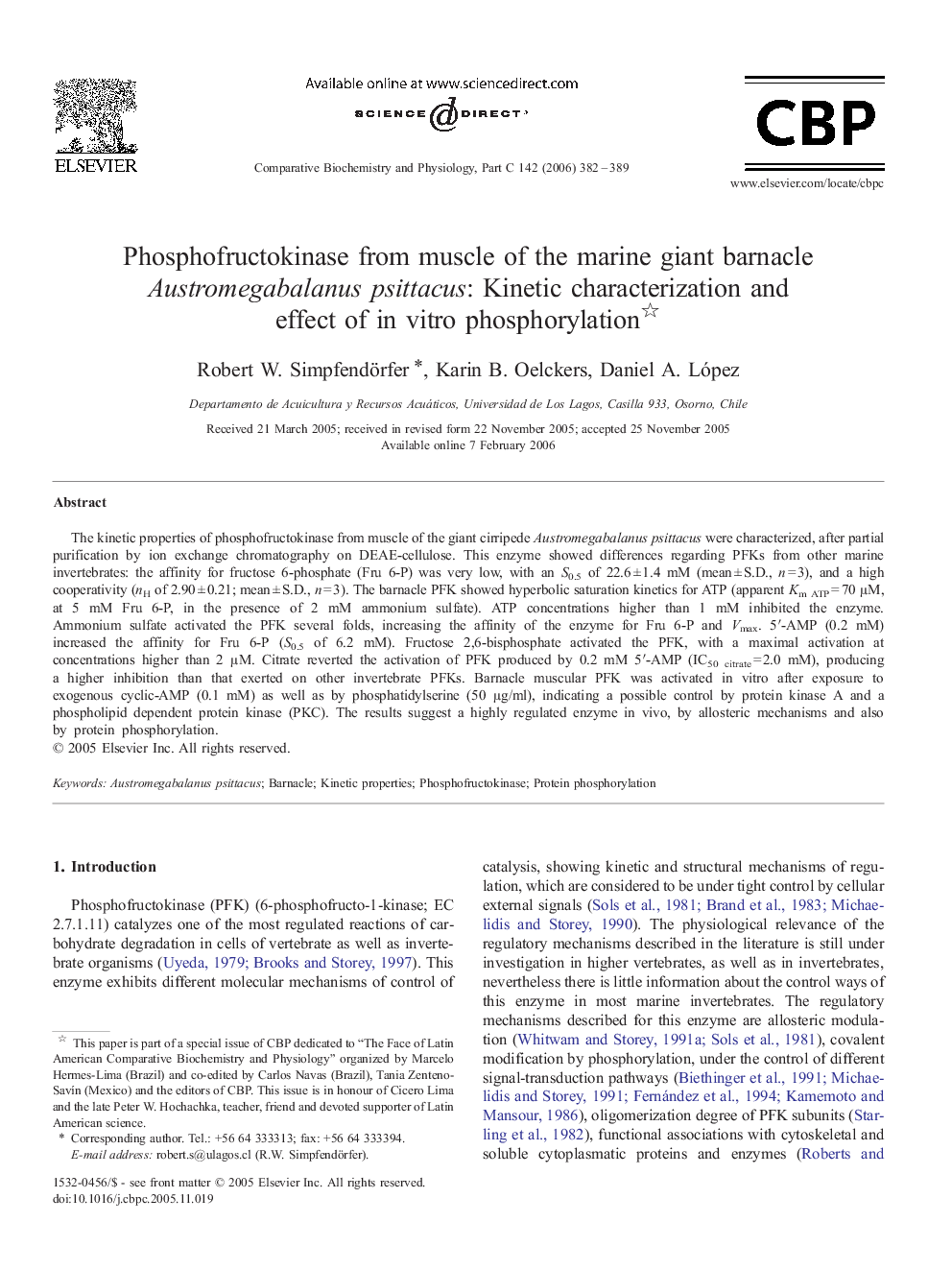| Article ID | Journal | Published Year | Pages | File Type |
|---|---|---|---|---|
| 1978346 | Comparative Biochemistry and Physiology Part C: Toxicology & Pharmacology | 2006 | 8 Pages |
The kinetic properties of phosphofructokinase from muscle of the giant cirripede Austromegabalanus psittacus were characterized, after partial purification by ion exchange chromatography on DEAE-cellulose. This enzyme showed differences regarding PFKs from other marine invertebrates: the affinity for fructose 6-phosphate (Fru 6-P) was very low, with an S0.5 of 22.6 ± 1.4 mM (mean ± S.D., n = 3), and a high cooperativity (nH of 2.90 ± 0.21; mean ± S.D., n = 3). The barnacle PFK showed hyperbolic saturation kinetics for ATP (apparent Km ATP = 70 μM, at 5 mM Fru 6-P, in the presence of 2 mM ammonium sulfate). ATP concentrations higher than 1 mM inhibited the enzyme. Ammonium sulfate activated the PFK several folds, increasing the affinity of the enzyme for Fru 6-P and Vmax. 5′-AMP (0.2 mM) increased the affinity for Fru 6-P (S0.5 of 6.2 mM). Fructose 2,6-bisphosphate activated the PFK, with a maximal activation at concentrations higher than 2 μM. Citrate reverted the activation of PFK produced by 0.2 mM 5′-AMP (IC50 citrate = 2.0 mM), producing a higher inhibition than that exerted on other invertebrate PFKs. Barnacle muscular PFK was activated in vitro after exposure to exogenous cyclic-AMP (0.1 mM) as well as by phosphatidylserine (50 μg/ml), indicating a possible control by protein kinase A and a phospholipid dependent protein kinase (PKC). The results suggest a highly regulated enzyme in vivo, by allosteric mechanisms and also by protein phosphorylation.
